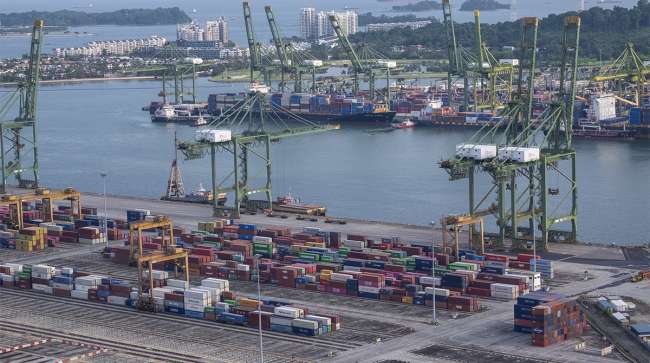World Container Shipping Rates Keep Rising

[Stay on top of transportation news: Get TTNews in your inbox.]
Inflation looks to be easing across the developed world, except for one glaring pocket of hot prices: cargo costs on the high seas.
Spot rates for full-size shipping containers to the U.S. and Europe from Asia rose again in the most recent data, with three key routes all topping $6,000 for a 40-foot equivalent unit, according to the Drewry World Container Index, released on June 13. They’ve all tripled since the end of 2023, though the pace of increases is moderating.
Nearly six months of regular attacks on vessels in the Red Sea has stretched capacity in an industry responsible for moving about 80% of all international goods trade, disrupting the normal flow and leading to bottlenecks in some of Asia’s biggest ports.
Singapore’s maritime gateway, among the world’s most vital crossroads for seaborne freight, is facing a sustained period of congestion. The waiting time for berth space there is nearing five days, according to industry estimates, and it’s ranging from one to four days in the Chinese ports of Ningbo, Shanghai and Qingdao.
On top of stretched supply, demand for goods is solid especially in the U.S. Imports at the Port of Los Angeles, the busiest seaport in the US, remained above the pre-pandemic peak in the first five months of 2024 despite ticking down in May.
Want more news? Listen to today's daily briefing above or go here for more info
According to Drewry, the cost of a 40-foot container to move merchandise to Los Angeles from Shanghai last week rose 0.8% to $6,025. That was the sixth straight week of gains.
The charge for Shanghai to Rotterdam increased 2.4% to $6,177, the highest level since September 2022.
From Shanghai to Genoa, Italy, in the Mediterranean Sea — among the routes hardest hit by the shipping industry’s avoidance of the Red Sea — the rate rose by 3% to $6,862, according to Drewry. That was also the highest since September 2022.
Drewry said it “expects that freight rates from China will continue to rise next week due to congestion issues at Asian ports.”




